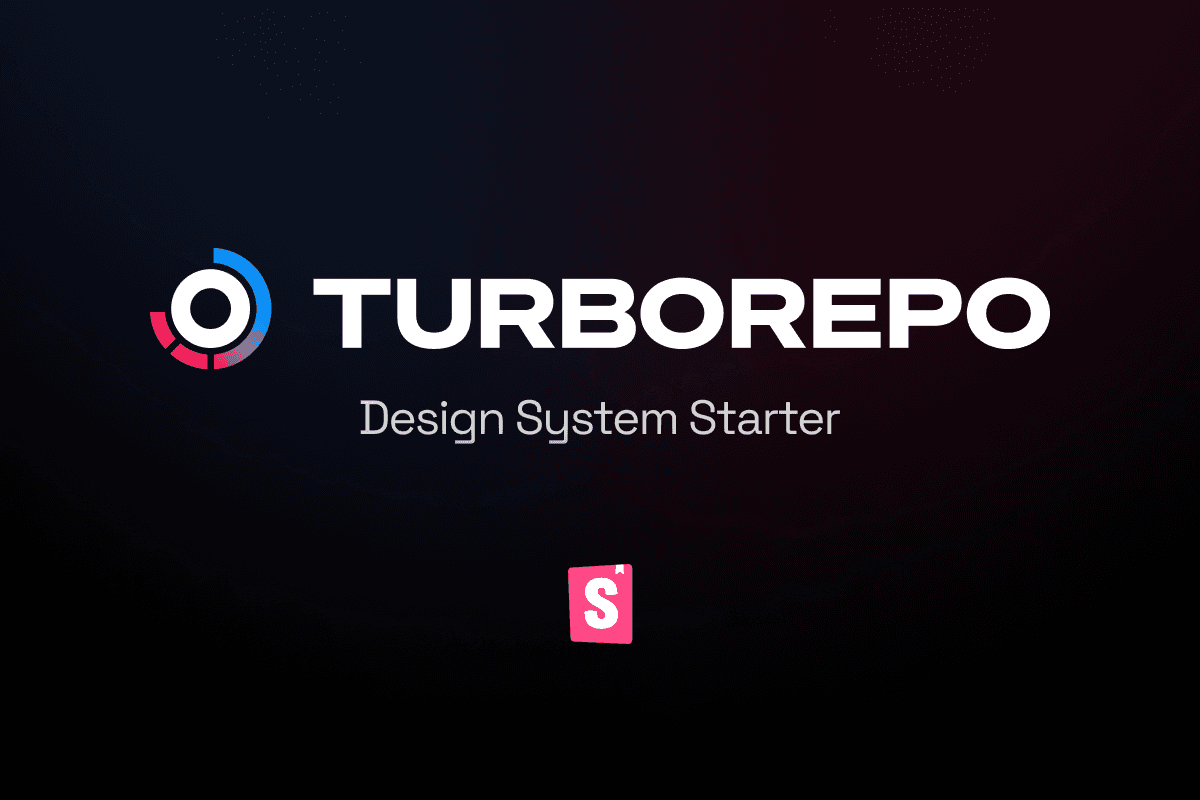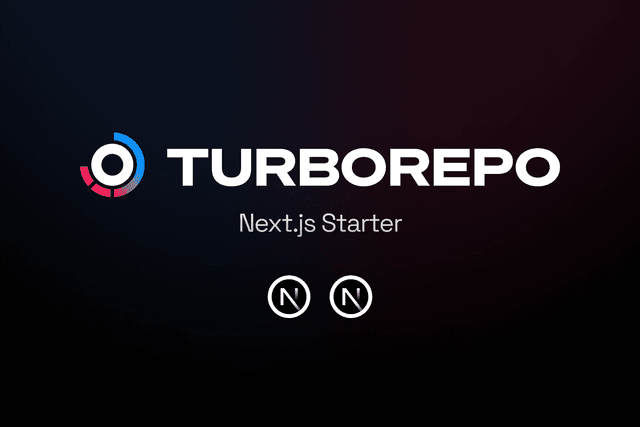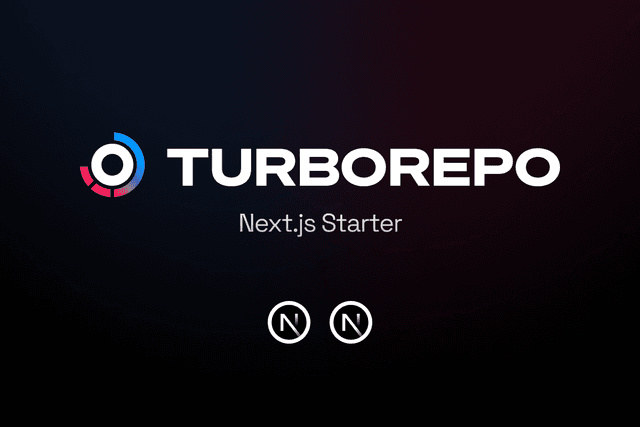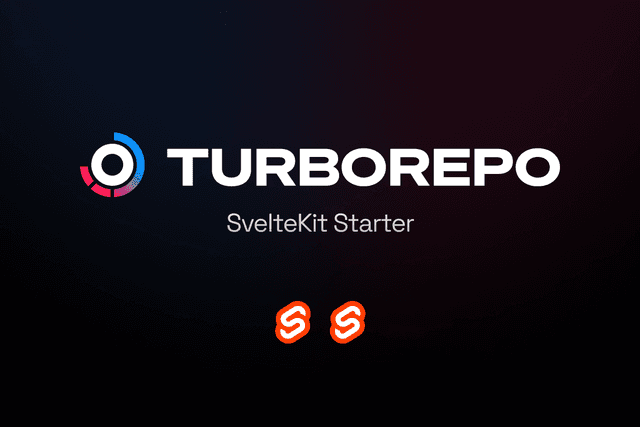
Turborepo Design System Starter
This is a community-maintained example. If you experience a problem, please submit a pull request with a fix. GitHub Issues will be closed.
This guide explains how to use a React design system starter powered by:
- 🏎 Turborepo — High-performance build system for Monorepos
- 🚀 React — JavaScript library for user interfaces
- 🛠 Tsup — TypeScript bundler powered by esbuild
- 📖 Storybook — UI component environment powered by Vite
As well as a few others tools preconfigured:
- TypeScript for static type checking
- ESLint for code linting
- Prettier for code formatting
- Changesets for managing versioning and changelogs
- GitHub Actions for fully automated package publishing
Using this example
Run the following command:
Useful Commands
pnpm build- Build all packages, including the Storybook sitepnpm dev- Run all packages locally and preview with Storybookpnpm lint- Lint all packagespnpm changeset- Generate a changesetpnpm clean- Clean up allnode_modulesanddistfolders (runs each package's clean script)
Turborepo
Turborepo is a high-performance build system for JavaScript and TypeScript codebases. It was designed after the workflows used by massive software engineering organizations to ship code at scale. Turborepo abstracts the complex configuration needed for monorepos and provides fast, incremental builds with zero-configuration remote caching.
Using Turborepo simplifies managing your design system monorepo, as you can have a single lint, build, test, and release process for all packages. Learn more about how monorepos improve your development workflow.
Apps & Packages
This Turborepo includes the following packages and applications:
apps/docs: Component documentation site with Storybookpackages/ui: Core React componentspackages/typescript-config: Sharedtsconfig.jsons used throughout the Turborepopackages/eslint-config: ESLint preset
Each package and app is 100% TypeScript. Workspaces enables us to "hoist" dependencies that are shared between packages to the root package.json. This means smaller node_modules folders and a better local dev experience. To install a dependency for the entire monorepo, use the -w workspaces flag with pnpm add.
This example sets up your .gitignore to exclude all generated files, other folders like node_modules used to store your dependencies.
Compilation
To make the ui library code work across all browsers, we need to compile the raw TypeScript and React code to plain JavaScript. We can accomplish this with tsup, which uses esbuild to greatly improve performance.
Running pnpm build from the root of the Turborepo will run the build command defined in each package's package.json file. Turborepo runs each build in parallel and caches & hashes the output to speed up future builds.
For @acme/ui, the build command is equivalent to the following:
tsup compiles all of the components in the design system individually, into both ES Modules and CommonJS formats as well as their TypeScript types. The package.json for @acme/ui then instructs the consumer to select the correct format:
Run pnpm build to confirm compilation is working correctly. You should see a folder ui/dist which contains the compiled output.
Components
Each file inside of ui/src is a component inside our design system. For example:
When adding a new file, ensure that its specifier is defined in package.json file:
Storybook
Storybook provides us with an interactive UI playground for our components. This allows us to preview our components in the browser and instantly see changes when developing locally. This example preconfigures Storybook to:
- Use Vite to bundle stories instantly (in milliseconds)
- Automatically find any stories inside the
stories/folder - Support using module path aliases like
@acme/uifor imports - Write MDX for component documentation pages
For example, here's the included Story for our Button component:
This example includes a few helpful Storybook scripts:
pnpm dev: Starts Storybook in dev mode with hot reloading atlocalhost:6006pnpm build: Builds the Storybook UI and generates the static HTML filespnpm preview-storybook: Starts a local server to view the generated Storybook UI
Versioning & Publishing Packages
This example uses Changesets to manage versions, create changelogs, and publish to npm. It's preconfigured so you can start publishing packages immediately.
You'll need to create an NPM_TOKEN and GITHUB_TOKEN and add it to your GitHub repository settings to enable access to npm. It's also worth installing the Changesets bot on your repository.
Generating the Changelog
To generate your changelog, run pnpm changeset locally:
- Which packages would you like to include? – This shows which packages and changed and which have remained the same. By default, no packages are included. Press
spaceto select the packages you want to include in thechangeset. - Which packages should have a major bump? – Press
spaceto select the packages you want to bump versions for. - If doing the first major version, confirm you want to release.
- Write a summary for the changes.
- Confirm the changeset looks as expected.
- A new Markdown file will be created in the
changesetfolder with the summary and a list of the packages included.
Releasing
When you push your code to GitHub, the GitHub Action will run the release script defined in the root package.json:
Turborepo runs the build script for all publishable packages (excluding docs) and publishes the packages to npm. By default, this example includes acme as the npm organization. To change this, do the following:
- Rename folders in
packages/*to replaceacmewith your desired scope - Search and replace
acmewith your desired scope - Re-run
pnpm install
To publish packages to a private npm organization scope, remove the following from each of the package.json's
Related Templates
Monorepo with Turborepo

Turborepo & Next.js Starter

Turborepo & SvelteKit Starter
